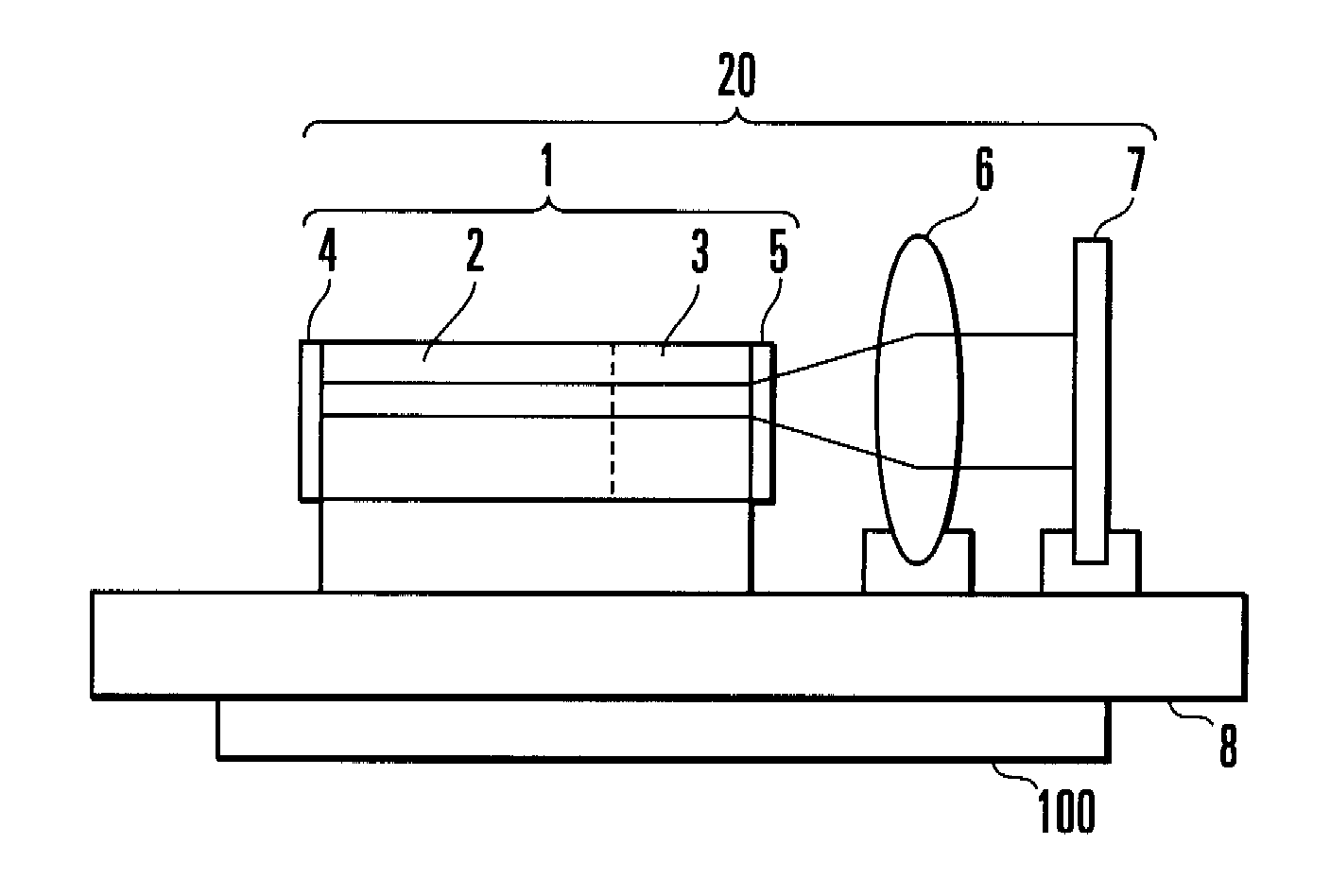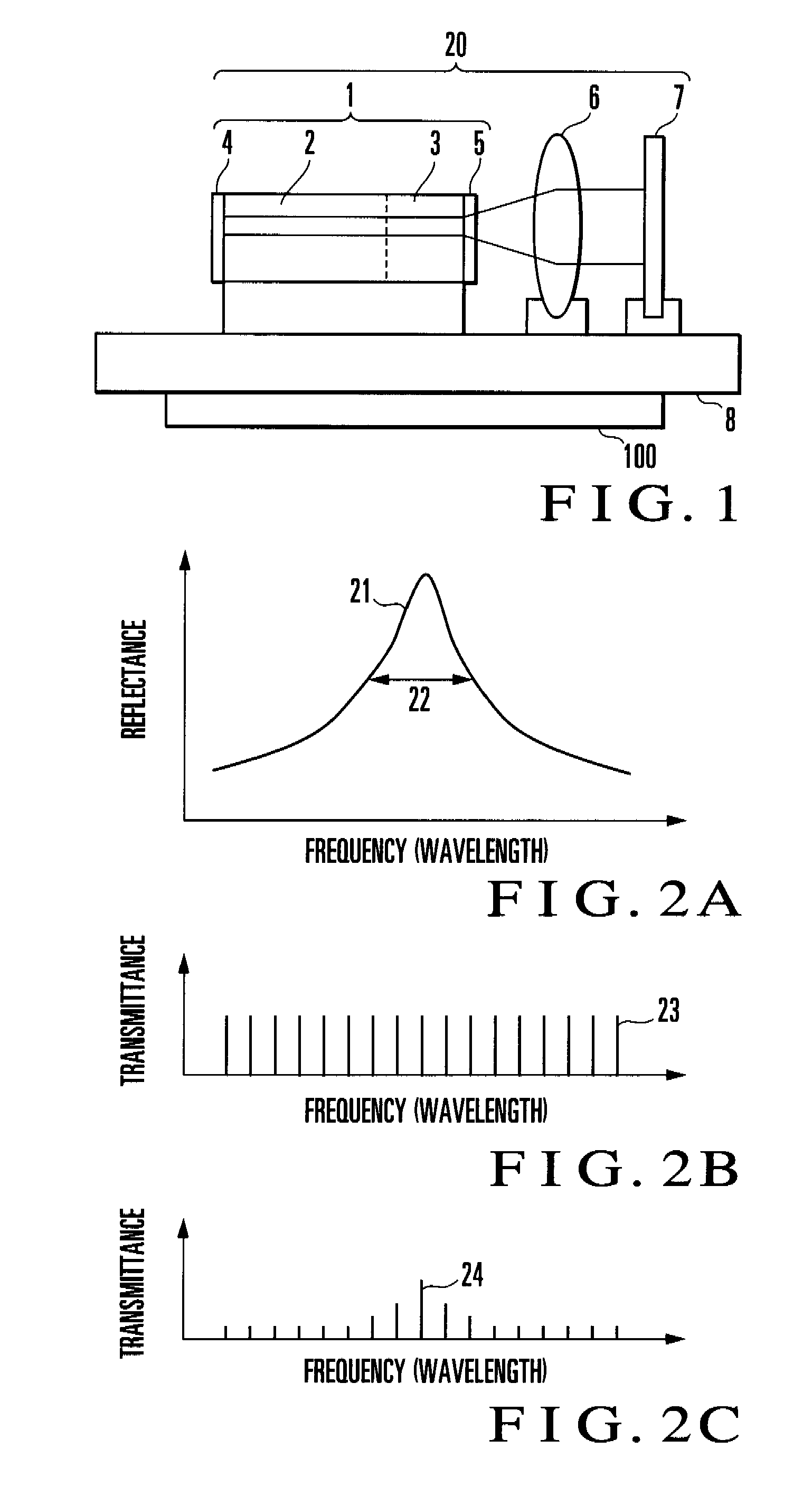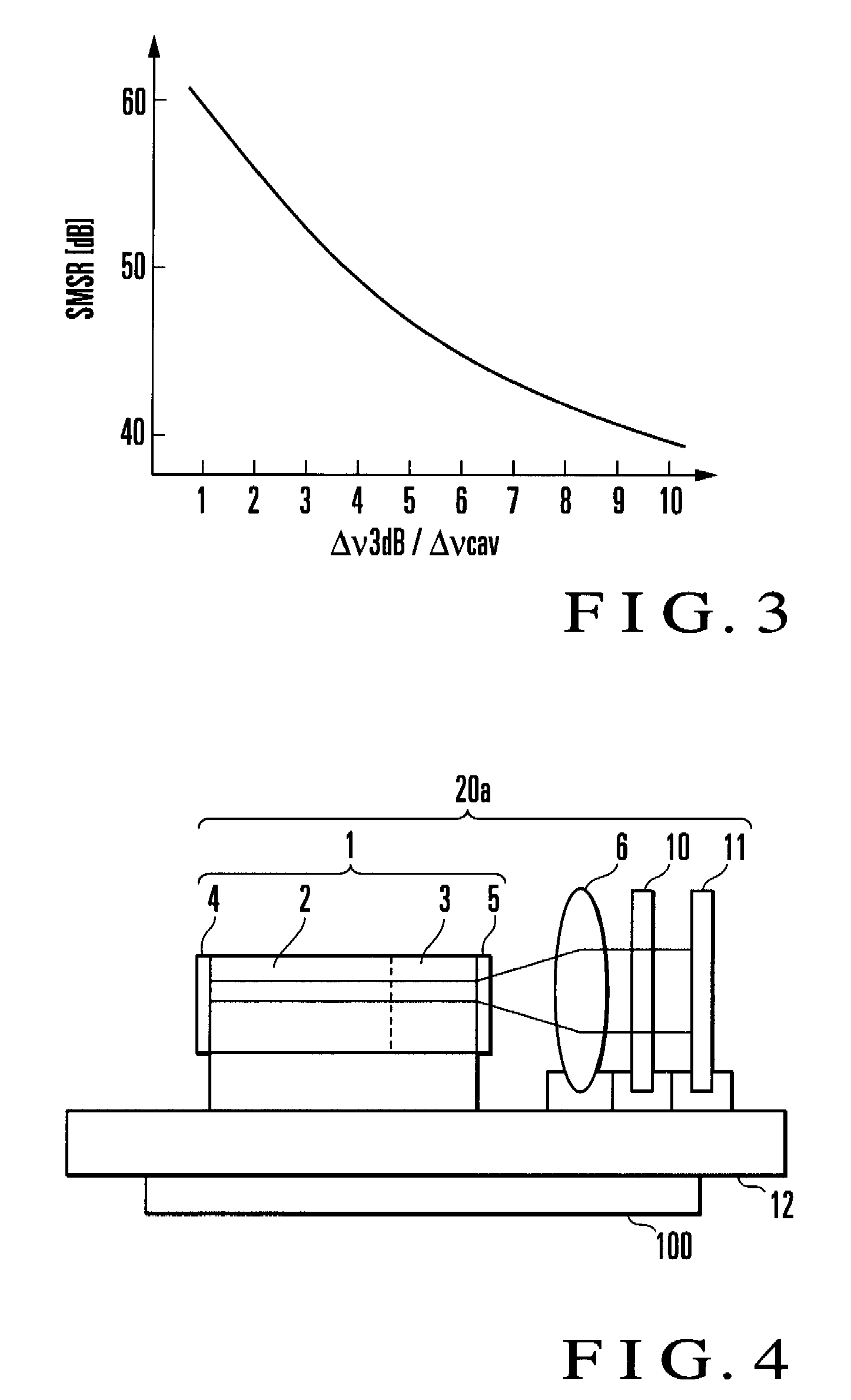External cavity wavelength tunable laser device and optical output module
a laser device and optical output technology, applied in semiconductor lasers, laser details, optical resonator shape and construction, etc., can solve the problems of increasing the cost of inventory management and stocktaking, increasing the loss of optical couplers, and external cavity wavelength tunable lasers, so as to minimize the loss in the external cavity, high laser mode stability, and high optical power operation
- Summary
- Abstract
- Description
- Claims
- Application Information
AI Technical Summary
Benefits of technology
Problems solved by technology
Method used
Image
Examples
first embodiment
[0061]The embodiments of the present invention will be described below with reference to the accompanying drawings. FIG. 1 is a side view showing the arrangement of an external cavity wavelength tunable laser according to the first embodiment of the present invention. This embodiment is configured not to use any wavelength selection filter in order to prevent optical loss due the use of a wavelength selection filter. An external cavity wavelength tunable laser according to this embodiment comprises a semiconductor element 1 including a semiconductor optical amplifier 2, a collimating lens 6, and a wavelength tunable mirror 7 whose reflection characteristic within the operating wavelength band is not periodic.
[0062]The semiconductor element 1 is obtained by integrating a phase adjustment area 3 as a passive element with the semiconductor optical amplifier 2 as an active element. In this embodiment, laser light is output from the left end face of the semiconductor optical amplifier 2....
second embodiment
[0081]The second embodiment of the present invention will be described next. FIG. 4 is a side view showing the arrangement of an external cavity wavelength tunable laser according to the second embodiment of the present invention. The same reference numerals as in FIG. 1 denote the same components in FIG. 4. The external cavity wavelength tunable laser of this embodiment comprises a semiconductor element 1 including a semiconductor optical amplifier 2, a collimating lens 6, a wavelength tunable filter 10 whose transmission characteristic within the operating wavelength band is not periodic, and a total reflection mirror 11.
[0082]This embodiment uses the wavelength tunable filter 10 and the total reflection mirror 11 instead of the wavelength tunable mirror 7 in the first embodiment. That is, an external cavity 20a comprises a low-reflection coating 4, the semiconductor optical amplifier 2, a phase adjustment area 3, a nonreflective coating 5, the collimating lens 6, the wavelength t...
third embodiment
[0093]The third embodiment of the present invention will be described next. FIG. 6 is a side view showing the arrangement of an external cavity wavelength tunable laser according to the third embodiment of the present invention. The same reference numerals as in FIG. 1 denote the same components in FIG. 6. In the first embodiment, the known wavelength locker mechanism disclosed in reference 2 can be placed outside the laser cavity. This can improve the wavelength accuracy with respect to the standard channel wavelength. In the third embodiment, the external cavity wavelength tunable laser of the first embodiment is incorporated in a module, and a wavelength locker is placed on the optical output side.
[0094]Referring to FIG. 6, reference numeral 1 denotes a semiconductor element; 2, a semiconductor optical amplifier; 3, a phase adjustment area; 7, a wavelength tunable mirror; 20, an external cavity; 31, an external cavity wavelength tunable laser module; 32, a first collimating lens ...
PUM
 Login to View More
Login to View More Abstract
Description
Claims
Application Information
 Login to View More
Login to View More - R&D
- Intellectual Property
- Life Sciences
- Materials
- Tech Scout
- Unparalleled Data Quality
- Higher Quality Content
- 60% Fewer Hallucinations
Browse by: Latest US Patents, China's latest patents, Technical Efficacy Thesaurus, Application Domain, Technology Topic, Popular Technical Reports.
© 2025 PatSnap. All rights reserved.Legal|Privacy policy|Modern Slavery Act Transparency Statement|Sitemap|About US| Contact US: help@patsnap.com



